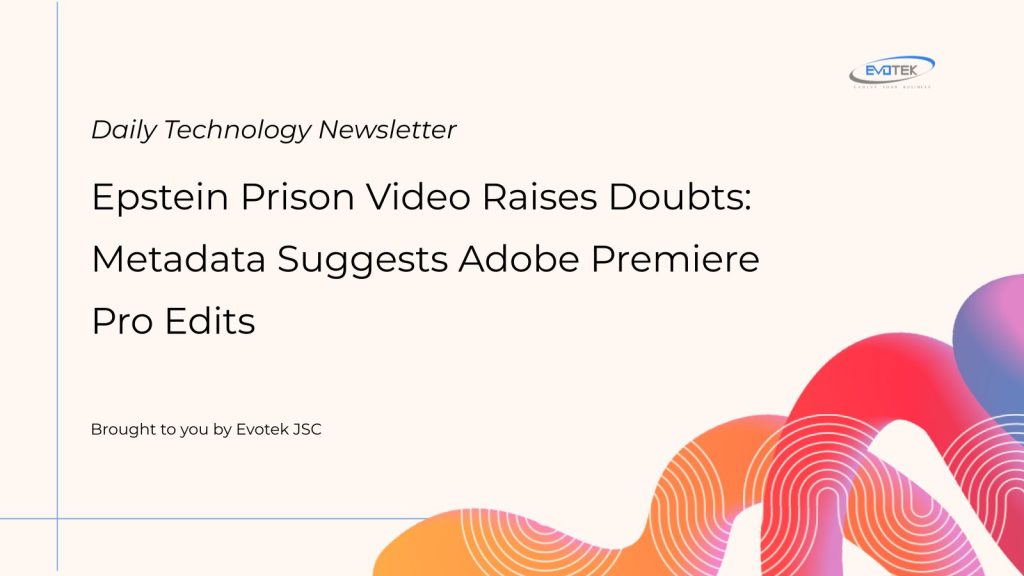Recently released surveillance footage of Jeffrey Epstein’s prison cell, intended by the Department of Justice (DOJ) to quell suspicions surrounding his 2019 death, has instead ignited further questions. Embedded metadata within the video strongly suggests the footage was modified, according to a recent report.
The 11-hour “raw” surveillance footage, obtained and analyzed by WIRED, appears not to be a direct export from the prison’s original surveillance system. Instead, the metadata points to post-processing using Adobe Premiere Pro, a widely recognized professional video editing software.
This purportedly complete footage, covering the hours before Epstein was found deceased in August 2019, shows signs of extensive manipulation. It appears to be a composite of at least two distinct source clips, having been saved four separate times before its final upload to the DOJ website. Further metadata analysis revealed the presence of Premiere project files and attributed these specific edits to a Windows user account identified as MJCOLE~1, occurring on May 23, 2025, within a concentrated 23-minute window.
Digital forensics expert Hany Farid, who meticulously examined the data for WIRED, expressed profound concerns regarding the video’s chain of custody. He starkly stated, “If a lawyer brought me this file and asked if it was suitable for court, I’d say no. Go back to the source. Do it right.” This expert assessment casts significant doubt on the footage’s evidentiary integrity.
Despite these findings, former Trump administration official Pam Bondi previously asserted the footage confirmed no one accessed the area outside Epstein’s cell during the critical overnight period. She did acknowledge a brief, approximately one-minute gap at midnight, which she attributed to a routine daily reset of the prison’s surveillance system.
The DOJ has offered no clear explanation for why the “raw” footage underwent processing in Premiere, deflecting inquiries between the FBI and the Bureau of Prisons. While experts concede that such edits could, in some instances, be benign—like converting a proprietary video format—the extraordinary lack of transparency in a case already steeped in suspicion only intensifies public doubt. As conspiracy researcher Mike Rothschild noted to WIRED, this kind of ambiguity inevitably fuels speculation, stating, “Whatever your flavor of Epstein conspiracy is, the video will help bolster it.”

 日本語
日本語 한국어
한국어 Tiếng Việt
Tiếng Việt 简体中文
简体中文